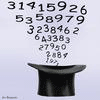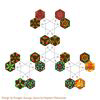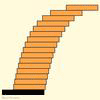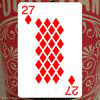Mathematics Awareness Month 2014: Mathematics, Magic, and Mystery
Navigate the Calendar
What Day is Doomsday?
What day of the week was July 27, 1963? It was a Saturday. There’s no need to consult a calendar. So says John Horton Conway.
Did you get all that? Best to let it sink in for a day or so. When you are ready, here is lesson two:
Let’s put this all together with an example: What day of the week was October 18, 1942?
Step 1. Doomsday Difference: October is the 10th month, so Oct. 10 is a doomsday. The 18th is eight days later—one week and one day later—so the 18th is one day after doomsday. In Conway’s parlance, Oct. 18th is “one on doomsday.” Make note of that with your thumb: 1 on.
Step 2. Century Day: The date is in the 1900s, and doomsday in the year 1900 was a Wednesday. Or in Conway’s parlance: “1900 was a Wednesday.” So the century day is Wednesday. Make note of that with your index finger: Wednesday.
Step 3. Number of Dozens: The year is 1942, and there are three dozens in 42. The number of dozens is three. Make note of that with your middle finger: 3 doz.
Step 4. Remainder: There are three dozens in 42, and the remainder is six. Make note of the remainder with your ring finger: 6 remainder.
Step 5. Leap Years: The number of leap years in the remainder is just the number of fours in the remainder. There is one four in six, so there is one leap year (1940) between 1936 and 1942. Keep track of the leap years with your pinky: 1 leap.
Now add them up: 1 + Wednesday + 3 + 6 + 1. One on Trebles-day is Fours-day, and 6 + 1 is a week, which cancels, so we get Fours-day + 3 = Sevens-day = Nun-day = Sunday. October 18, 1942 was a Sunday! Note that steps 2–5 together give you doomsday for the given year, while step 1 gives your date relative to that doomsday. So, for example, doomsday in 1942 was a Saturday.
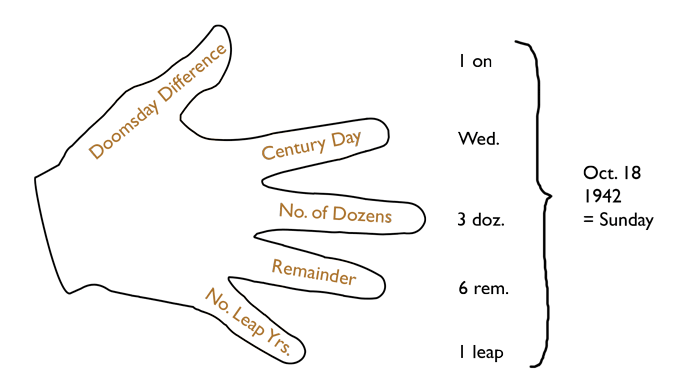
Conway credits both Martin Gardner and Lewis Carroll for their contributions to his doomsday algorithm. In March of 2014, he told us the story:
Taking it Further
Working out years in other centuries requires the additional step of determining the “century day,” that is, the doomsday for the first year of the new century. Doomsday for 1900, for example, was a Wednesday, and doomsday for 2000 was a Tuesday. The table below gives the century day for 12 nearby centuries:
| Wed | Tue | Sun | Fri |
|---|---|---|---|
| 1500 | 1600 | 1700 | 1800 |
| 1900 | 2000 | 2100 | 2200 |
| 2300 | 2400 | 2500 | 2600 |
Keep in mind that the adoption of the current Gregorian calendar was not uniform. Introduced in 1582 and adopted immediately by Italy, France and Spain, the Gregorian calendar was not officially adopted by Britain and the American colonies until 1752. The Julian calendar was in use from 45 BC until the switch to the Gregorian system. Finding the century day for Julian dates is simple: See the poem in the next section.
Here are some questions to test your speed dating skills:
- On what day of the week were you born?
- Prince William, Duke of Cambridge, married Kate Middleton on April 29, 2011. What day of the week was it?
- French mathematician Henri Poincaré was born on April 29, 1854. What day of the week was it?
- Martin Luther King delivered his famous “I have a dream” speech on August 28, 1963. What day of the week was it?
- The Declaration of Independence was signed on July 4, 1776. What day of the week was it?
- In the 1993 movie Demolition Man, Sandra Bullock complains about going to work on a Monday. Later that day, we learn from Sylvester Stallone’s cyrogenic capsule that the date is August 3, 2032. Oops! That date is not a Monday. What day of the week is it?
The Underlying Mathematics
The complete doomsday algorithm has been set to verse. According to number theorist Richard Guy, the words “are essentially Conway’s, but true to the oral tradition they’ve been transcribed by Alf ver der Poorten” and modified slightly by Guy and others. (The poem pre-dates the “9–5 job at the 7–11” mnumonic.)
It’s the last day of Jan. or of Feb. that will do
(Except that in leap years it’s Jan. 32).
Now for even months use the month’s own day,
And for odd ones add four, or else take it away,
According to length. Or simply remember: You only subtract for September, November.
Now to work out your Doomsdays the orthodox way,
Three things you must add to the century day:
Dozens, remainder, and fours in the latter
(If you alter by sevens, of course it won’t matter).
In Julian times; lackaday, lackaday —
Zero was Sunday; centuries fell back a day.
But Gregorian four hundreds are always a Tues.
And now centuries extra each take us back twos.
Lewis Carroll’s original article, “To Find the Day of the Week for any Given Date,” (Nature, Vol. 35, March 1887, pp. 517–517) is available from the Gutenberg Project here. You will see that it was Carroll who came up with the idea of counting by dozens and taking remainders.
Martin Gardner wrote about the doomsday algorithm in his Scientific American column and later in the book Mathematical Carnival, now part of the CD compilation Martin Gardner’s Mathematical Games: The Entire Collection of His Scientific American Columns on one CD (MAA, 2008). See chapter 7, “Tricks of Lightning Calculators.”
There are many other techniques for finding the day of the week on a given date. In the article, “What Day Is Doomsday? How to Mentally Calculate the Day of the Week for Any Date,” by Chamberlain Fong, (Scientific American, Oct. 18, 2011), another algorithm, designed for easy mental calculation and called the “Odd + 11” method, is discussed. Fong and Walters’ complete description of this method is laid out in their article “Methods for Accelerating Conway’s Doomsday Algorithm,” presented at the 7th International Congress of Industrial and Applied Mathematics (2011).
Arthur Benjamin uses a different technique for his lightning calculations for days of the week. His method is described in Secrets of Mental Math: The Mathemagician’s Guide to Lightning Calculation and Amazing Math Tricks, by Arthur Benjamin and Michael Shermer (Crown, 2006).






